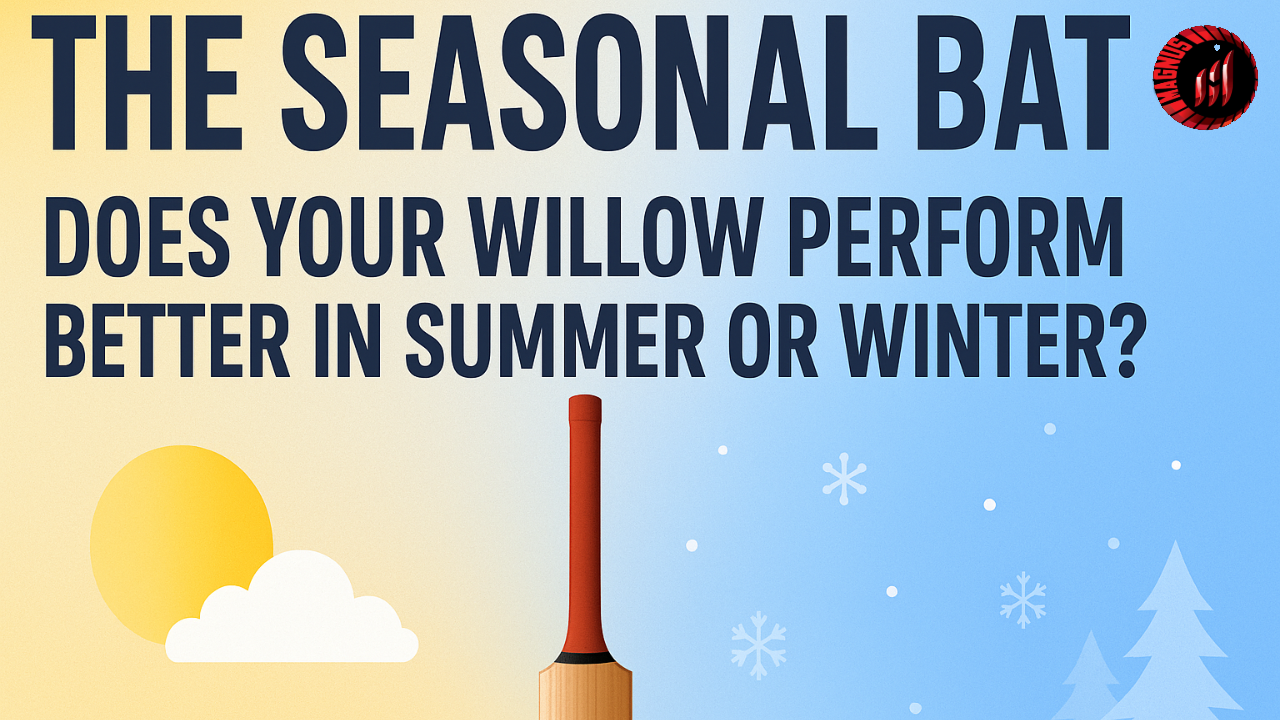Every cricketer knows how much weather can affect a game. But have you ever thought about how the season impacts your bat?
You oil it, knock it in, and care for it — but your bat might still perform differently depending on the time of year. The truth is, willow is a living material, and like any natural product, it reacts to its environment.
So the question is: Does your bat actually perform better in summer than in winter? Let’s dive into the surprising science behind seasonal bat behavior.
The Nature of Willow: Why It Reacts to Weather
English willow, the most common material for high-performance cricket bats, is prized for its lightness, grain quality, and ability to compress on impact.
But it’s also a porous, moisture-sensitive wood. That means:
-
In humid or wet conditions, it can absorb moisture, becoming heavier and less responsive.
-
In dry, hot conditions, it can lose moisture, becoming lighter but also potentially more brittle.
-
In cold weather, the fibers tighten up, which can create a harder feel on contact — reducing rebound or “ping.”
So yes, your bat can change across the seasons — and your game might too.
Summer Performance: Light, Dry, and Responsive
During summer:
-
Lower humidity and higher temperatures help keep the bat dry.
-
The willow feels more “alive”, often delivering a crisp ping when middled.
-
Shots feel smoother, and timing improves due to better rebound off the blade.
-
But prolonged exposure to heat can dry out the bat too much, leading to cracks or splitting if not maintained properly.
Tip: Store your bat in a cool, shaded place when not in use. Don’t leave it in a hot car or near windows.
Winter Performance: Dense, Damp, and Dull?
Winter brings challenges:
-
Cold air and damp outfields mean bats can absorb moisture from the environment.
-
The result? A slightly heavier bat that feels sluggish.
-
Cold willow is also less flexible, making it more prone to surface cracks or vibration stings on mis-hits.
-
Timing becomes harder, especially for players relying on wrist speed or quick backfoot play.
Tip: Wipe your bat after play in wet or damp conditions. Keep it stored in a dry room — not near heaters, which can warp the wood.
How to Manage Your Bat Through the Seasons
-
Oil and Condition Regularly
Re-oil lightly between seasons to balance moisture content and keep the wood nourished. -
Rotate Between Bats
Use a slightly heavier bat in winter and switch back to a lighter, more responsive one in summer. -
Avoid Rapid Temperature Shifts
Sudden heat or cold can cause the wood to expand or contract unnaturally. -
Use a Bat Cover or Sleeve
Helps regulate temperature and protect from atmospheric moisture.
Is There a "Seasonal Sweet Spot"?
Interestingly, some players find their bat peaks mid-season — not at the start. After a few weeks of use in warm, consistent weather, the bat’s fibers compress just enough to unlock full performance.
Others feel their bats never quite “wake up” until the dew disappears and the sun returns.
So while it’s true that the sweet spot is built into the bat, it’s also influenced by the weather around you.
Cricket bat types, Cricket equipment in usa, Cricket equipment store, Cricket gloves, Cricket helmet, Cricket kit bags, Cricket retailers, Durable cricket gloves, English willow bats, Icc approved helmets., Kashmir willow cricket bat, Latest kashmir willow bat
